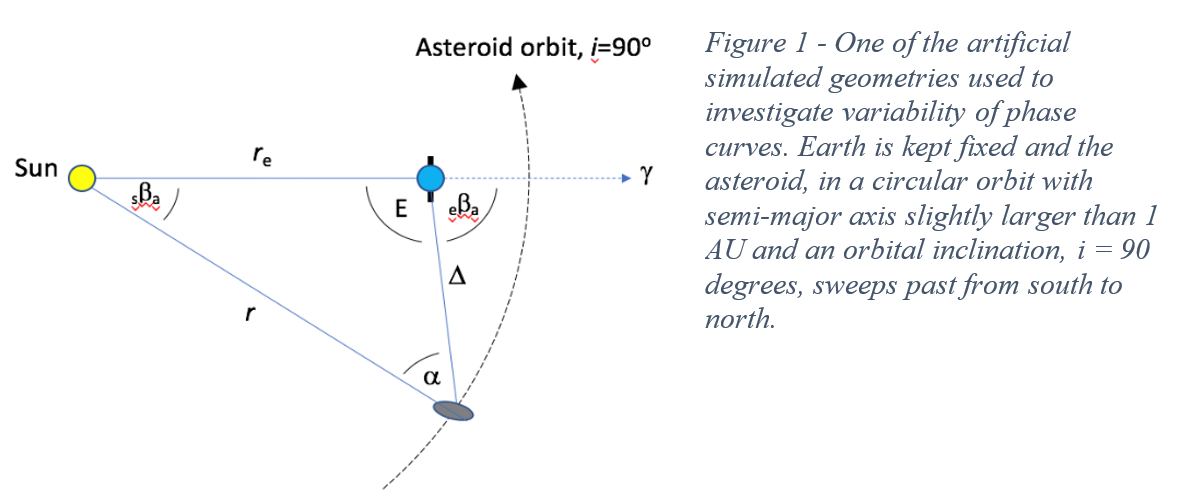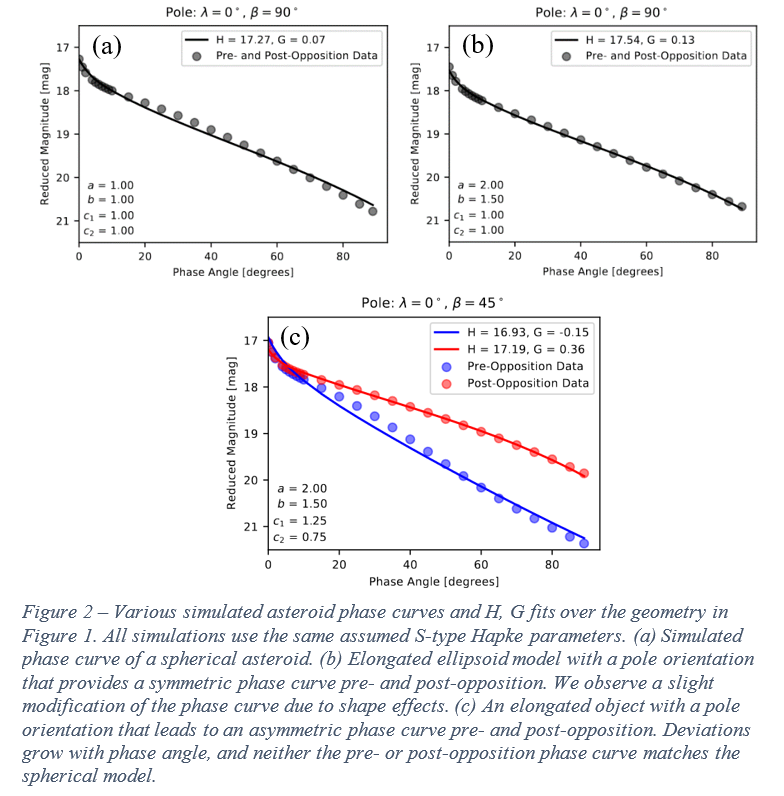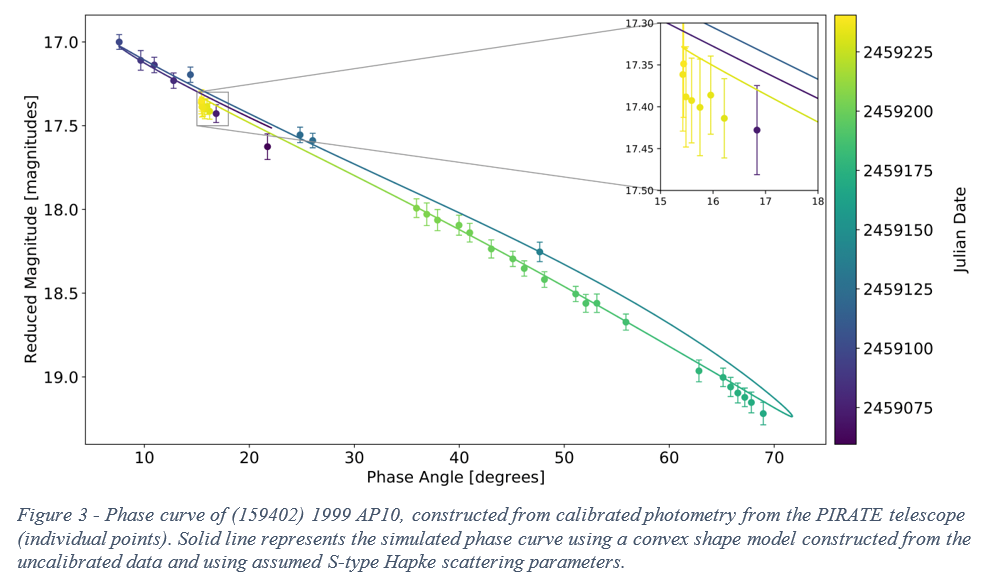Phase Curve Variability of near-Earth Asteroids
- 1School of Physical Sciences, The Open University, Milton Keynes, United Kingdom
- 2Centre for Astrophysics and Planetary Science, University of Kent, Canterbury, United Kingdom
1. Background
The nature of asteroid phase curves is typically explained solely by the scattering properties of atmosphereless particulate surfaces. Models such as the H, G [1] and H, G1, G2 [2] systems aim to approximate the behaviour of these scattering properties without any assumption of the physical processes involved. However, these and other models are unable to account for changes in disk-integrated brightness of asteroids due to changing viewing aspect geometry during and between apparitions. If the viewing geometry of an asteroid changes rapidly, then the change in the cross-sectional area visible by the observer can impart modulations to the phase curve, becoming more significant for elongated asteroids [3]. These effects are likely to be significant for asteroids that undergo large changes to viewing aspect during apparitions, i.e. the near-Earth Asteroids (NEAs). Shape-induced modulations to phase curves limit the taxonomic information that can be extracted from parameters such as G, or G1 & G2. In this work we are aiming to characterise the magnitude of these shape effects, and investigate the potential error introduced into interpretation of individual phase curves.
2. Modelling Phase Curve Variability
To study this effect, we have simulated asteroid phase curves for a variety of shapes over different geometries. Figure 1 describes one of these geometries that has the Earth kept fixed, with the asteroid sweeping past from south to north during a close approach with the Earth. We create ellipsoidal models, with a spherical model as a control, with differing pole orientations. The rotationally averaged reduced magnitudes for points along the orbit are simulated using a Hapke scattering model [4], using assumed S-type parameters based on (433) Eros [5].

We note significant deviations from the spherical model for elongated objects over these geometries and observe clear separation of pre- and post-opposition phase curves for certain pole orientations (Figure 2). The large differences between these phase curves and the spherical model at high phase angles indicate that taxonomic information may be far more limited in individual phase curves of NEAs than previously thought. Using a single parameter taxonomic fitting method [6] we obtain a classification for the pre-opposition phase curve in Figure 2(c) as C-type, and for the post-opposition phase curve we obtain an E-type classification. The taxonomic classification using this method changes entirely based on when the asteroid is observed. The separation of the phase curve in Figure 2(c) is significantly larger at higher phase angles, underscoring the importance of this effect in NEA phase curves.

3. Observational Detection of Phase Curve Variability
Phase curve variability has been detected in rotationally averaged calibrated photometry from the PIRATE telescope of NEA (159402) 1999 AP10 over a single apparition from 2020-07-29 to 2021-01-24 (Figure 3). PIRATE is a 0.43m aperture telescope located at Observatorio del Teide, Tenerife. These observations were conducted as part of an ongoing NEA observation and facility characterisation project [7]. A convex shape model is constructed from the uncalibrated PIRATE photometric data and additional archival data from ALCDEF [8]. Using simulations of the phase curve over this apparition using the convex model and assumed S-type Hapke parameters we verify that the variability in the phase curve is a result of aspect changes during the apparition.

4. Future Work
Further work will investigate the potential impact of shape modulations to phase curves in the formulation and optimisation of the basis functions in phase curve models. Methods for extracting taxonomic information from phase curves with potential shape modifications will need to be developed to continue to aid the classification of NEAs from photometric data in existing and upcoming datasets (e.g. LSST).
References
[1] Bowell et al. 1989, in Asteroids II, 524
[2] Muinonen et al. 2010, Icarus, 209, 542
[3] Rozitis et al. 2020, Bulletin of the AAS, 52(6)
[4] Hapke 1984, Icarus, 59, 41
[5] Li et al. 2004, Icarus, 172, 415
[6] Penttilä et al. 2016, Planetary and Space Science, 123, 117
[7] Jackson et al. 2021, submitted to PASP
[8] Stephens et al. 2018, AAS, DPS Meeting #50, id 417.03.
How to cite: Jackson, S., Rozitis, B., Green, S., Kolb, U., Andrews, A., Dover, L., and Lowry, S.: Phase Curve Variability of near-Earth Asteroids, European Planetary Science Congress 2021, online, 13–24 Sep 2021, EPSC2021-255, https://doi.org/10.5194/epsc2021-255, 2021.

